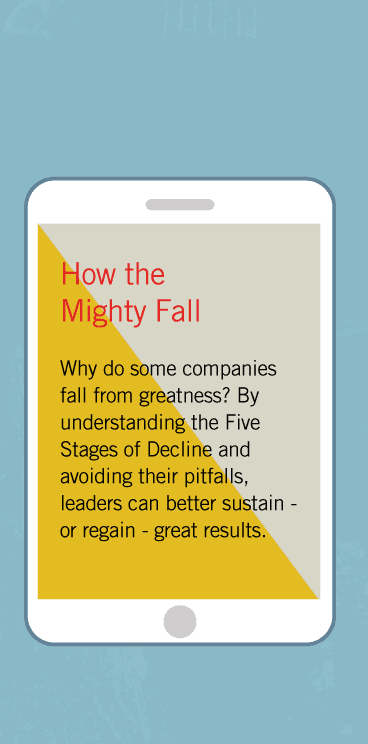Leadership Reckoning
Nearly a century ago, one of my intellectual mentors, Peter Drucker, made a three-part argument about a fundamental shift in the cellular structure of free society. First, he observed that we were becoming a society of organizations. For free society to function and compete, we must have high-performing, self-governed organizations in every sector, not just in business, but equally in government and the social sectors. Without that, in Drucker’s view, the only workable alternative is totalitarian tyranny. Second, high-performing organizations, in turn, depend directly on excellent management. Good management makes human strength productive; bad management squanders human capability and destroys people’s spirit. Third, developing management capability would become as important to the working of society as law, medicine, education, or the sciences. Viewed in a larger lens, Drucker saw management as a liberal art, requiring not merely technique but deep wisdom and enlightened, humane practice.
Drucker proved prescient; organizations well-managed did, indeed, become the cellular structure of free society working at its best. I sometimes muse that all subsequent management literature for the 20th century can be distilled down to a single sentence: Drucker was right.
But I also suspect we might now be in the midst of an equally profound historical shift, a reordering of free society into a next-iteration cellular structure: from a society of organizations well-managed into a society of networks well-led.
In a network, power is generally diffused and rarely does any one individual have enough concentrated power to get things done by mere directive. Leading in a network is more akin to being an effective senator—one of a hundred—than leading as a CEO vested with the power of executive decision. Effectiveness will increasingly rest upon the rarified ability to truly lead. True leadership only exists if people follow when they would otherwise have the freedom to not follow.
In 2012 and 2013, I had the privilege to serve a two-year appointment as the Class of 1951 Chair for the Study of Leadership at the United States Military Academy at West Point. It is one of the world’s greatest leadership development institutions, having been in the business of building leaders of character for more than two centuries.
One of the informal mantras at West Point that stayed with me is the notion that you’re a leader at every level of your service, no matter what your formal rank. I also learned that the military stereotype of martinets simply ordering people around is almost entirely unfounded. The best military leaders use power with great discretion and mostly lead by example, by request, by showing the way. Leadership is not about invoking rank; leadership is about seeing clearly what must be done, taking action, and inspiring others to join you in throwing their energies’ full force into the task.
In my time as the leadership chair at West Point, I learned an important lesson from Brigadier General Bernard (Bernie) Banks, who was the head of the Department of Behavioral Sciences and Leadership before he retired from active military service to become the associate dean for Leadership Development and Inclusion at Northwestern University’s Kellogg School of Management. He told me that he would sometimes receive phone calls from representatives at various universities who wanted to come and learn from West Point about leadership. How does West Point develop students as leaders? He would respond to them with a simple question. “What kind of leaders do you want them to be? What kind of character do you want them to have?” Banks found that even some of the most elite universities did not have a clear answer.
Universities have an important opportunity. They’re never going to be quite like the military academies, such as West Point or Annapolis, nor should they be. But universities can learn an essential lesson from the academies: leadership development is not an “add-on” patch that we stick onto young people while they get their “real” education. Leadership development is the real education.
And leadership development is not about helping young people cultivate an extroverted “leadership personality.” Across decades of research into what makes great companies tick, my research team and I found that few great company builders led with an outsized charismatic personality, and on the flip side, charismatic personalities often played a devastatingly toxic role in leading companies to disaster. The central task in leadership development is not about burnishing surface behaviors; the central task is about developing strong inner character.
What if universities were to fully embrace the mission to develop young women and men to be highly capable leaders in a diffused-power world, whatever they end up doing in life? What if students graduated with a similar perspective—that the point of their education is not just to gain knowledge and a degree but to become a certain kind of person. Highly proficient in some domain, yes, but more than that. The kind of person who sees clearly what must be done and does not wait for permission from authority or peer-group approval to act. The kind of person who sees everything through a prism of core values and who strives to live up to those values in every aspect of work and life. The kind of person who never sees other people as merely an expedient means to one’s own career success and who earns the trust and love of those they lead. The kind of person who, by virtue of personal humility and indomitable will in service to a cause larger than oneself, inspires others to help in the achievement of BHAGs (Big Hairy Audacious Goals) that stimulate progress.
That strikes me as a powerful model for effective leadership in the 21st century. It is a model that the authors of this book, and the Doerr Institute itself, represent. But this level of leadership requires tremendous skill. This book is about creating the capability within universities to produce graduates with such skills—well developed and at grand scale.
How, then, do we develop such leaders at scale? Business schools have already put some thought into this question. But as Tom Kolditz of the Doerr Institute points out, business schools across the country only graduate about 100,000 people each year, and probably fewer than 30,000 are intensively developed as leaders. By contrast, colleges and universities in the U.S. alone graduate over 2.2 million people each year. What if we could influence a large portion of those young people and help them develop their leadership skills in a meaningful way? How much of an impact might we have on creating the society Peter Drucker envisioned—one that is both more productive and more humane?
The idea, here, is to create a double flywheel effect. In the research for Good to Great, my team and I uncovered the flywheel principle.1 In creating a good-to-great transformation, there’s no single defining action, no grand program, no miracle moment. Rather, it feels like turning a giant, heavy flywheel. Pushing with great effort, you get the flywheel to complete one entire turn. You don’t stop. You keep pushing. The flywheel moves a bit faster, then faster still, adding more momentum as the flywheel spins. Then at some point—breakthrough! The flywheel flies forward with almost unstoppable momentum. Each turn builds upon previous work as you make a series of good decisions, supremely well executed, that compound one upon another. All great companies harness the flywheel effect.
Later, in Good to Great and the Social Sectors, I observed how the flywheel principle also applies to social sector institutions.2 But there is a big difference between business flywheels and social flywheels. For a business, you can focus primarily on the flywheel of your own corporation. For the social sectors, however, there are always at least two flywheels. There is the flywheel of your specific institution, and there is the flywheel of the overall cause your institution serves. For example, the Cleveland Clinic must build its own flywheel as a leading healthcare institution and simultaneously contribute to the overall flywheel of a healthcare ecosystem that serves the well-being of all people. Leadership development at universities can contribute to the institutional flywheel of each specific university, as its graduates add to the school’s reputation by virtue of their increasing leadership impact in life and work. This, in turn, contributes to the overall flywheel of universities stimulating progress across all of society. The two flywheels should reinforce each other, thereby elevating society and the role and reputation of universities within our society.
The arguments put forth in this book suggest that we can achieve this kind of leadership momentum at scale and that we can do so with objective, quantitative, measureable impact. That is a bold claim, and bold claims always need to be examined carefully. That said, if it is truly possible to build large numbers of students into leaders through cost-effective means, then we have a compelling argument for optimism that we can yet create the best American century.
America is at an inflection point. The question is, what is the trajectory? Will America fall into decline and decay, as have other great nations in history? Or will it experience a burst of self-renewal, a rebirth that reframes the 20th century as just the warm-up for the spectacular progress and upward trajectory of the 21st? Part of the answer may lie in how well we build millions of young people into leaders of character and how well we deploy those leaders into every walk of life.
The ability to innovate at scale marked America’s rise in the 20th century. But imagine if we are able to develop leaders at scale as one of our greatest and most enduring innovations. Leadership might be the most important raw material America can offer the world. And without it, we may wind up with precious little to offer at all.
2. Jim Collins, Good to Great and the Social Sectors: Why Business Thinking Is Not the Answer (New York: HarperCollins, 2005).






